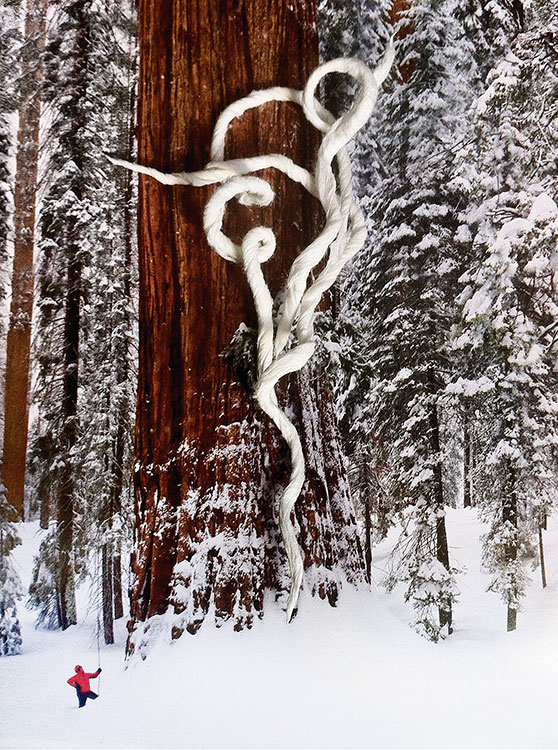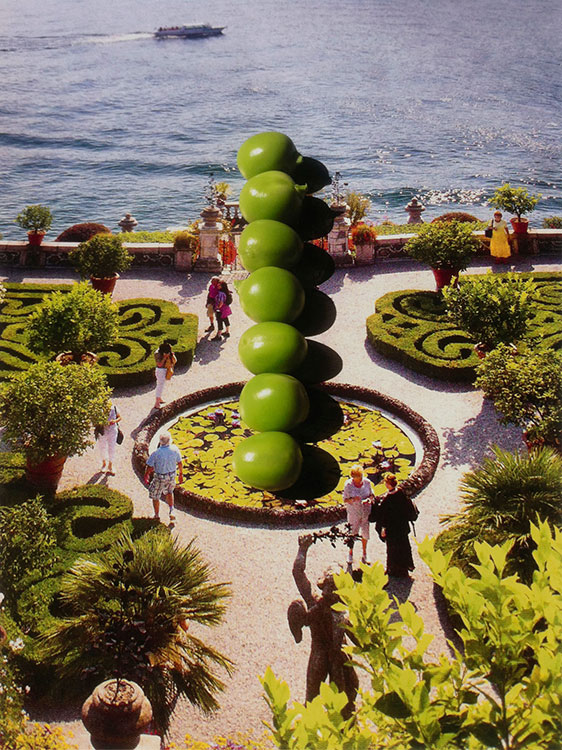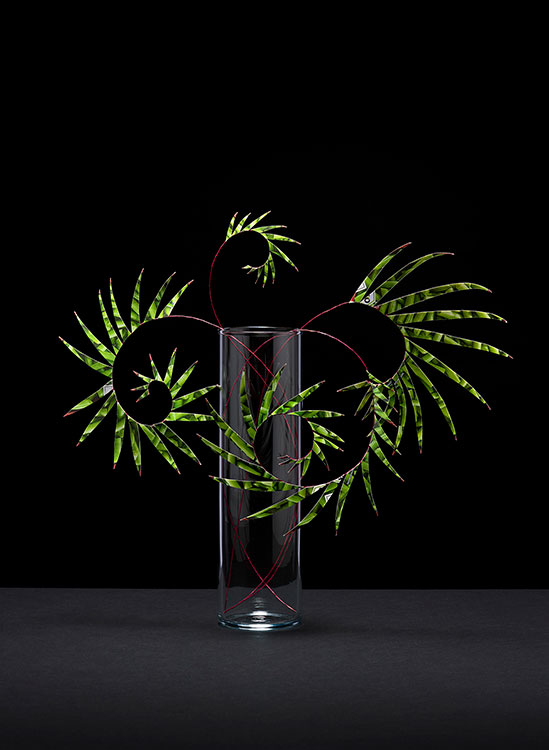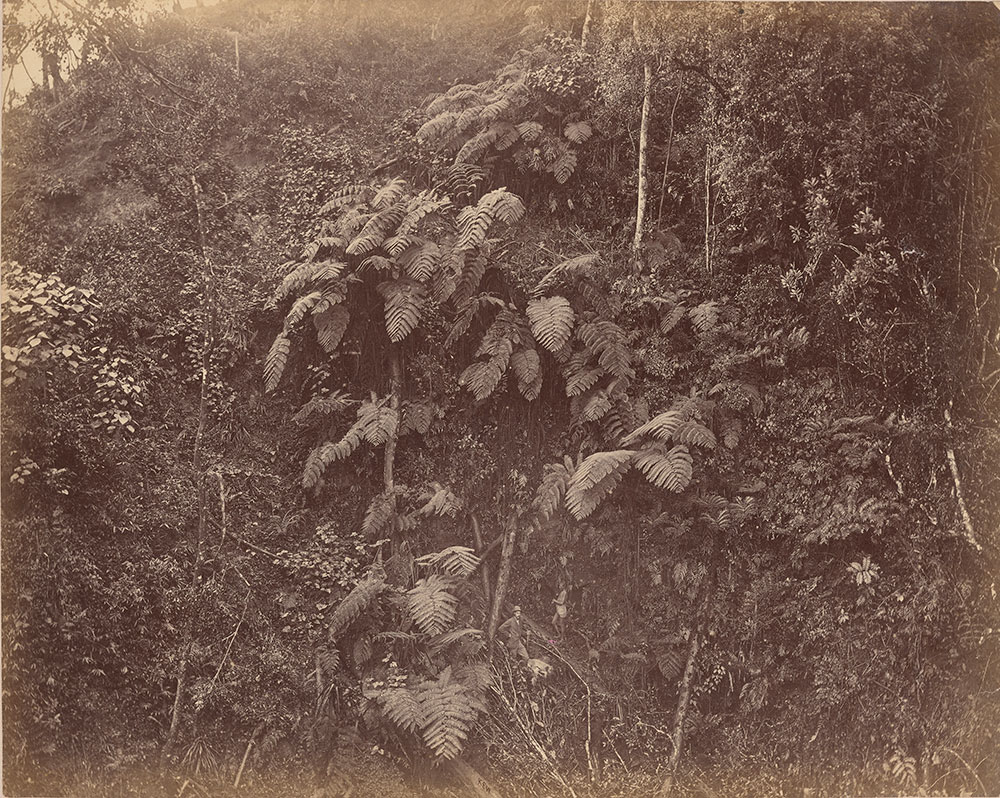Nina Katchadourian: Plants can sneak up on you and I think there, there are several examples of that in this group. They move slowly, you don't see 'em coming, but eventually they will potentially eat you alive. I wanted to put all these things together in this group to think about the ways that plants sometimes have a kind of almost human agency to slowly overtake something else. In both Giant Redwood and the image of two men in a jungle that was taken in India around 1860. The scale of the humans is wildly dwarfed by the scale of the plant life. And, there's something quite humorous about that actually to me, that the, that the people have become shrunken in the face of these much, much bigger and perhaps even threatening plants.
Something else that's going on in this group is about the impulse to preserve plants, the kind of botanist view of, of how you might extract something from its native environment and then preserve that thing by pressing it into a book or by flattening it or reproducing it, collecting it, archiving it.
I made topiary while I was on an airplane on a long flight by using a picture from the inflight magazine of a decorative garden on the shores of Lake Como. And I happened to be eating a bag of fresh green peas. So I stacked up a number of them, placed them on this image, and made this, um, very, very large topiary structure that a number of very, very small people are clustered around, walking around. I spent about a year studying plant structures and then trying to make fake plants from memory. I was not interested in replicating actual plants. I wanted to sort of see if I could residually remember the way that plants tend to be structured. And so looking through stuff in my trash at home or stuff in the trash at the studio, I made an extensive series of fake plants using materials that I then constructed into quite refined plant forms. The one you're looking at here is made from the packaging from a box of frozen beans that I hadn't noticed until I thought, what if I cut that into leaf like shapes and glued them to a piece of wire?




